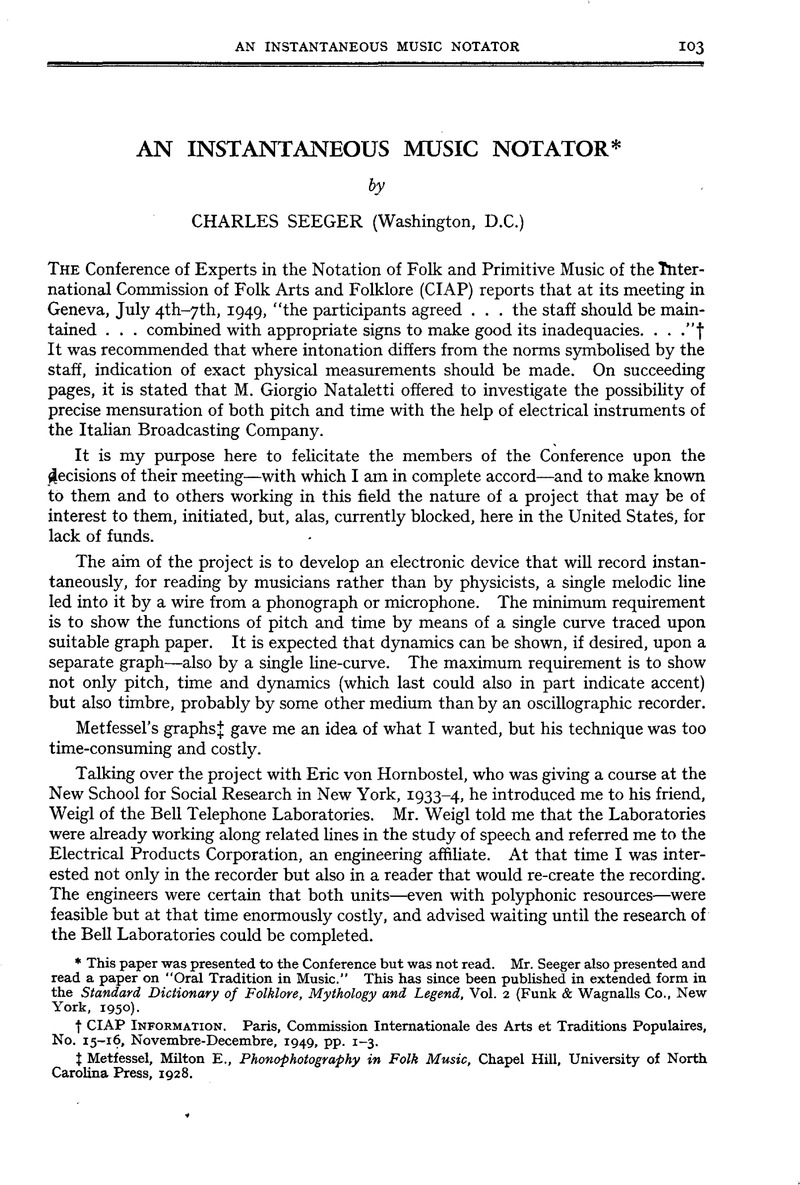Published online by Cambridge University Press: 07 March 2019

This paper was presented to the Conference but was not read. Mr. Seeger also presented and read a paper on "Oral Tradition in Music." This has since been published in extended form in the Standard Dictionary of Folklore, Mythology and Legend, Vol. 2 (Funk & Wagnalls Co., New York, 1950).
page 103 note † CIAP Information. Paris, Commission Internationale des Arts et Traditions Populaires, No. 15-16, Novembre-Decembre, 1949, pp. 1-3.
page 103 note ‡ Metfessel, Milton E., Phonophotography in Folk Music, Chapel Hill, University of North Carolina Press, 1928.
page 104 note * Potter, Ralph K., "Visible Patterns of Sound," In Science, Vol. 102, No. 2654, Nov. 7, 1945, pp. 463-470. "Techniques for automatically recording the wave forms of sounds have been very highly developed; but there has remained unsolved, until recently, the problem of recording sounds in a manner permitting their ready visual interpretation and correlation with the auditory sense. An outstanding difficulty with the interpretation of the records of wave forms is the effect of phase relationship between fundamentals and harmonics. . . The facts are that wave traces contain too much information." The apparatus designed by the Bell Laboratories especially so that deaf persons could read telephone conversations was called the "sound spectrograph." It is linear in response. See also: Potter, Ralph K., Kopp, George A. and Green, Harriet C, Visible Speech, New York: D. Van Nostrand Inc., 1947.
page 106 note * Bronson, Bertrand H., "Mechanical Help in the Study of Folk Song." In Journal of American Folklore, Vol. 62, No. 244, April-June, 1949, pp. 81-86.
Please note a has been issued for this article.